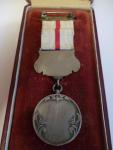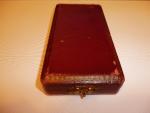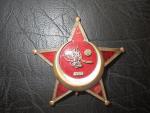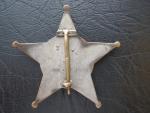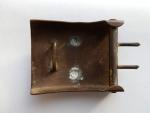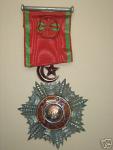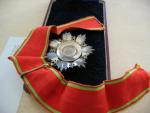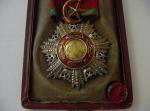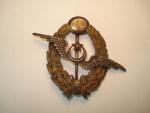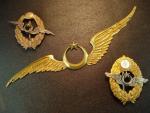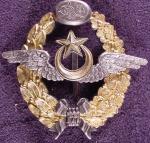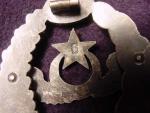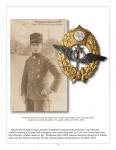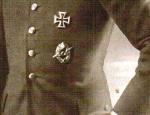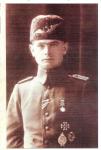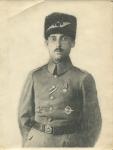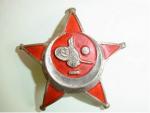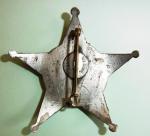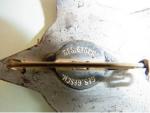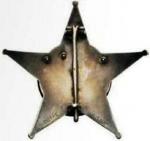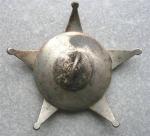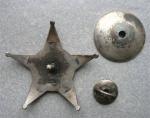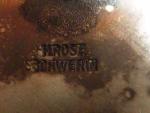-
Posts
1,179 -
Joined
-
Last visited
-
Days Won
9
Content Type
Profiles
Forums
Blogs
Gallery
Events
Store
Everything posted by demir
-
Ottoman Hilal-i Ahmer Madalyasi (Red Crescent Medal) Year: 1912 - Hijri 1330 AV: 28.5 mm 34.2 gr AR: 28.5 mm 29.3 gr AE: 28.5 mm 26 gr White ribbon with red line in the middle. When awarded for the actions actually being in the combat zone, an oak leaf made of same metal of the medal has been applied on the ribbon Silver Red Crescent Medal with Silver Oak Leaf :
-
Hello, Here is a silver plated, pierced tughra TWM with a " Z" sign on the pin. I can not find it among the German medal makers. I believe our friends in the forum will come with an answer. Best wishes Demir
-
Here is another Ottoman WWI belt buckle made in Germany. Asakir-i Şahane is written on it. (Imperial Army "Asakir-i Sahane" (Asakry Shahanah) (Sultans Army-Ottoman Army) ) Regards Demir
-
The point is how did it end up in Germany? A German soldier fighting the British in the Ottoman soil took it home and lost it while working on the field.
-
Hi, It is same both sides but don't know what it is. Ottoman: Nefer Turkish: Asker, er English: Private, soldier Regards Demir
-
I posted the item in my Ottoman medals and articles page and waiting for an answer. Regards Demir My websites: The Turkish War medal and everything about Canakkale (Gallipoli): https://www.facebook.com/groups/harpmadalyasi/ The Ottoman medals and articles etc: https://www.facebook.com/groups/osmanlimadalyalari/ Korean War medals : https://www.facebook.com/groups/koremadalyasi/
-
Please check these TWMs in the famous e... web site if you want to see some new creations antiquitaeten-kaiserslautern 190922423886 hermangali 161155417075 sas-str 161153845143 slimcase1958 350932038305 bennyundrocky 261338244676 and this one says the medal is a Godet : "Garantiere Original Gallipoli Star Godet in 950 ger silber mit emaile bilder sind bestand der beschreibung versand nur versichert auf wunsch standart versand ohne haftung meiner seits"
-
Although there is nothing to add more, I want to share some more photos of Medjidie ribbons which also have a red edge after the green stripe. But as I and Avşar said it is a rosette for any ribbon with green stripe and red edge.
-
-
It is just a souvenir from the days of proclamation of "The Second Constitutional Era (ايکنجى مشروطيت دورى[citation needed] İkinci Meşrûtiyyet Devri) of the Ottoman Empire began shortly after SultanAbdülhamid II restored the constitutional monarchy after the 1908 Young Turk Revolution, resulting in the revival of the Ottoman parliament, theGeneral Assembly of the Ottoman Empire." http://en.wikipedia.org/wiki/Second_Constitutional_Era
-
Hello, Avşar has a good knowledge of Osmanie and Medjidie orders and handles a lot of these during his years selling them. IMHO Medjidie has a different style then the earlier ones, you can see it when you compare the reverse. The scimitar parts shown in the thread were attached later, it can be easily seen in your last photos, the holes which they were attached are irregular and bigger then normal (normally they fit the attached part) and there is no gold gilt on the scimitar. I am also sorry to indicate that as Avşar writes the craftsmanship of the scimitar is not good also. So I second Avşar's opinion on the subject. Regards Demir
-
Hi, According Mr. Edhem Eldem (The History of Ottoman Orders and Medals p. 140): “This medal (AKKA 1840) have been struck in “Istanbul” (I say Istanbul since he does not say anything about other Mints in the Empire, and Medals as far as I know had been struck in Istanbul - demir). According to a document dating 1257/1841 a total of 6 brilliant and 6000 gold and silver medals had been struck. (So they were all struck at the same Mint- demir) The British Ambassador received 3 brilliant medals for Adm. Stopford, Commodore Napier and Major Charles Smith and 65 gold Medals for Captains and Commanders, 1002 silver Medals for other Officers and 11081 copper medals for soldiers and other ranks. (British Ambassador was in Istanbul, I don't think that Medals were brought from another part of the Empire- demir) English sources have more and detailed information about this medal, especially the work of Douglas-Morris is very rich.” The reason why I shared a summary of what Mr. Eldem wrote is; he is well known expert on the subject. Weights I gave in my earlier thread was from Mr. Erüreten’s book (Ottoman Medals and Orders, p.179 Ottoman Mint in Istanbul was responsible for the medals and I don’t think that they struck medals in different weights because I don’t think that they used a different die for every struck of the same medal. According to Mr.Pere (Coins of the Ottomans, Istanbul 1968, p. 303): “AV 29 mm 22,5 gr. He did not give any measurement for silver and copper.” If we accept the diameter of the Medal given by these experts why don’t we accept the weights. Sultan Abdülmecid I (1839-1861), enforced the Tashih-i Ayar (correcting the value of the money- correcting the difference between the market value and official value of coins because of the weight value of the silver and gold) which brought the standardization of the monetary system in the 5th year of his reign. So according to this argument the coins and medals may/must not be same weight because there was no standard before 1844, but let us not forget that the Ferman (Sultans decree, order) about this standardization had been issued in 1840 and applied in 1944. On the other hand, 1841 document says that the medals were ready for distribution. IMHO the Ottoman Mint did not need to wait the coming standardization of the monetary system in order to struck a Medal if they had the diameter and the weight in their hands. Regards Demir
-
But at least it helps, and those are the official weights. Apart from known characteristics of a medal I always check weights, if there is a difference within a reasonable amount because of the wear caused by handling and the years then there is no problem. Otherwise I will not buy it. This is what I do. If one doesn't consider it an indication then there is no problem also. Demir
-
Hi, Beware of replica Akka medals, IMO it is always a good idea to weigh them: AV: 29 mm 22.5 gr AR: 29 mm 16 gr AE: 29 mm 13.2 gr Regards Demir
-
Hi Alex, Meybauer is not the subject of this thread, the question is the upward looking badge. Since you know a lot about the badge, I would like to receive your comment very much. Best wishes Demir
-
Hello, The wings on the Turkish pilot badges shown in the photos below are all looking downward toward the bottom right. All the badges I have known were like those until I noticed a photo of Captain Buddecke; he is wearing a badge and wings are looking upward toward the top right. Is this a variation or was it an early type?
-
No, as Chris said it is probably good, but who ever he was he got the pin similar to that badge and attached it to the medal. and again as Chris says: If Preissler DID make TWM back then.... why are they unknown? Why is just one or two on the market?
-
Pilots: 1. Major Erich Serno 2. Captain Oswald Boelcke, Liman von Sanders and Captain Buddecke 3. Pilot Fuat Çakar
-
1. Pilot Major Erich Serno 2. Pilot Oberleutnant Hans Joachim Buddecke, Liman von Sanders and Pilot Hauptmann Oswald Boelcke
-
-
-
Here are 3 fakes or let's say copies which were not made by the makers written on them. Rose Schwerin, Rothe Wien and Ges.Gesch (gesetzlich geschützt -protected by law - I think only the pin). Please read the threads on these medals. I bought the Rose Schwerin from a seller in Aachen for 250 euros and after discussion in this forum, I got in touch with the seller and without saying a word he refunded me. The words Rose Schwerin were applied later, even applied twice. Rose Schwerin: http://gmic.co.uk/index.php/topic/47023-turkish-war-medal-made-by-hrose-schwerin/ Rothe-Wien: http://gmic.co.uk/index.php/topic/56057-turkish-war-medal-maker-rothe-wien-another-fake/?hl=rothe Ges. Gesch: http://gmic.co.uk/index.php/topic/56058-turkish-war-medal-ges-gesch-sign-on-the-pin/ Rose Schwerin :





